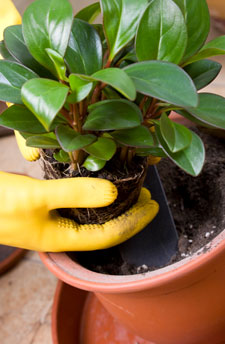
You don’t have to wait for warmer weather to get a breath of fresh air. There’s no denying bringing the green indoors can be healthy for the body, as well as the mind.
In fact, some scientists believe that many houseplants, in addition to helping exchange carbon dioxide for oxygen, are capable of absorbing volatile organic compounds… those unhealthy substances that can turn a healthy house “sick.” The healthiest choices include palms, ferns, rubber plant, ficus and spider plants.
As spring approaches, it’s a perfect time to repot and perk up your houseplants — and in the process, you’ll remove dust mites, molds and other potential allergens that can congregate on the leaves and in the soil.
Here’s what you should, and shouldn’t do when repotting houseplants during the winter months:
DO
- Use sterile soil to ensure a healthy indoor environment
- Use a container a couple of inches larger to allow for future growth
- Avoid cutting or tearing roots
DON’T
- Repot plants immediately after moving them indoors — they’ll need a couple weeks to adjust
- Repot plants that grow actively in the winter (Christmas Cactus, Amaryllis)
- Overwater dormant plants
Because you’ll be using sterile potting soil, it’s critical that you use a good plant food.
Read more about the healthiest houseplants (and those to avoid) at Good Housekeeping’s TheDailyGreen.com.